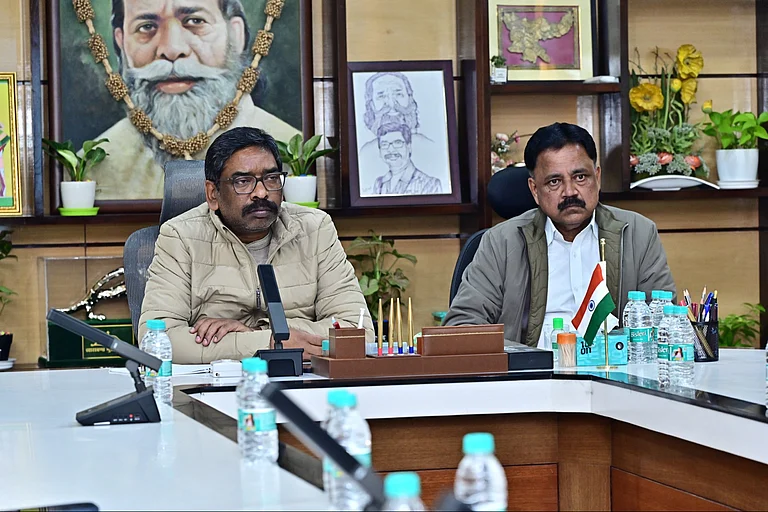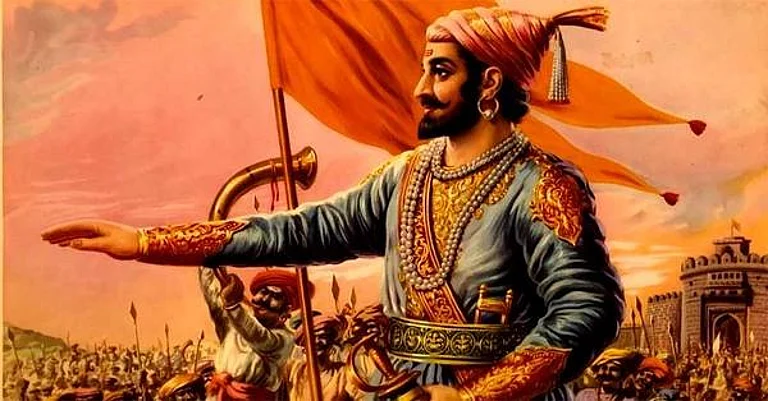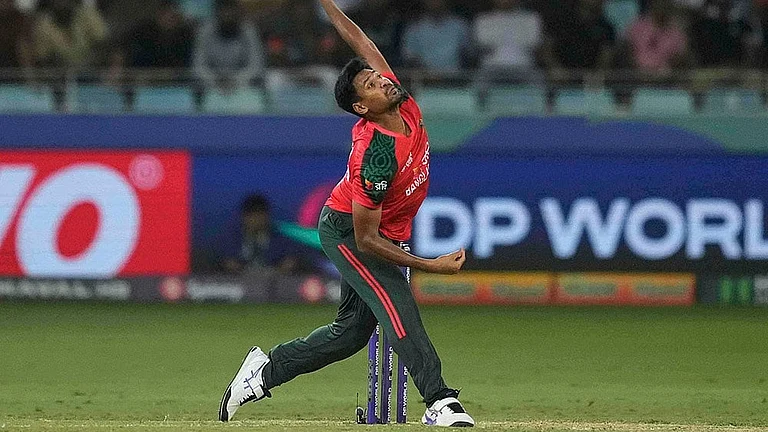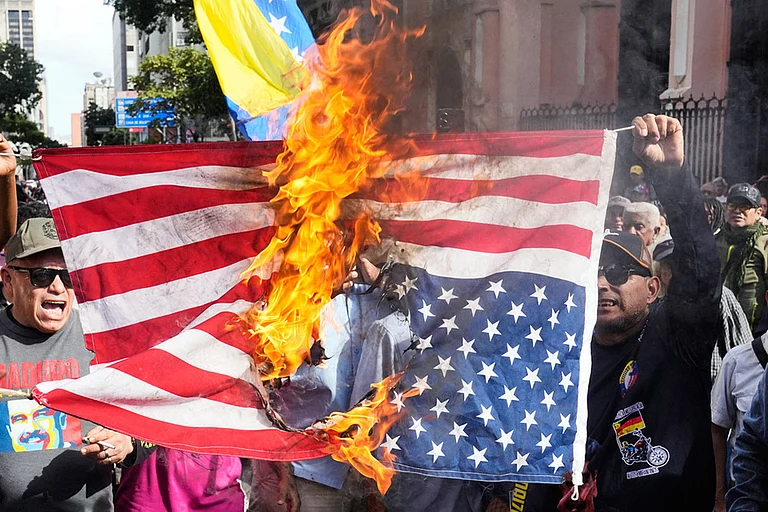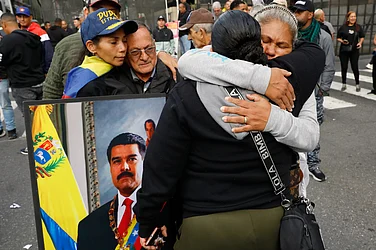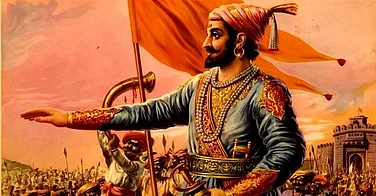On a brick wall outside Edgware Road underground station in central London, a new graffiti appeared that reads, “Another world is possible”. People have been thronging to see the artwork and take pictures, suspecting it to be by street artist Banksy. The elusive artist has neither claimed nor denied it.
It depicts a robotic arm being pulled by three people. What could it mean, people are thinking. Some on social media are speculating that it is about the potential dangers of AI, while others believe it is about the present world order in light of the war between Israel and Hamas. The second – if the artwork indeed belongs to Banksy – is possible, for the artist has a long history with the Palestinian cause.
Banksy artworks have often appeared in times of a humanitarian crisis. The England-based artist is known for his political activism and subversive epigrams through his absurdist and dystopian street art. He has also extensively worked in Palestine in the last two decades.

Some of his most-recognised works in the region include “Love Is In The Air”, also known as the “Flower Thrower” in Jerusalem, “The Armoured Dove” in Bethlehem, a small girl in a pink dress frisking an Israeli soldier, and a donkey being asked for its identity card by a soldier.
However, some of his works, like the viral “Slingshot Rat”, have been removed from the city walls by unknown persons over time. Palestinians have also criticised the removal of his artwork as a theft of their property.
Banksy At West Bank Wall
In August 2005, after a few of his murals had gained him recognition in England, Banksy travelled to the West Bank and Gaza Strip. He created a series of images on the Palestinian side of the West Bank Wall, the 700-km-long and 38ft high separation barrier from Israel, as a mark of protest.
The wall, which was declared illegal by the International Court of Justice in 2004 and ordered to be dismantled but wasn’t, became the site of colourful graffiti of messages and slogans in English and Arabic. Nine of them belonged to Banksy, drawing tourists from across the world.
One of the images shows two gleeful children holding a sand bucket and spade below a hole in the wall that opens to a vista of a tropical beach destination. Another shows a young girl rising with the help of air balloons, and another shows a little boy sitting at the foot of a rope ladder that goes all the way up to the top of the wall. His artworks depicted a life that people residing in Palestine do not get to live but can only dream of.

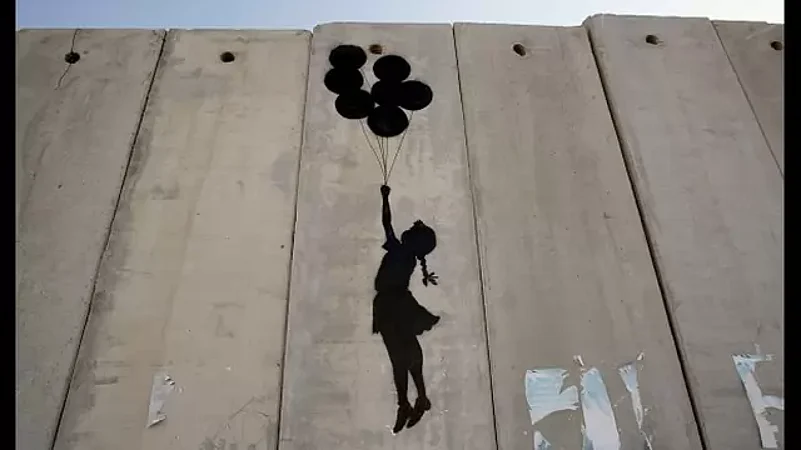
Banksy’s Hotel In Bethlehem
Banksy owns a boutique hotel in Bethlehem called ‘The Walled Off Hotel’, nestled against the wall dividing Israel and Palestine. A genuine place to stay, the hotel is also a symbol of protest and an exhibition of his artwork. It has a museum and art gallery that also showcases the works of other Palestinian artists. The “customised” rooms look out to slabs of bricks and have no view. It was opened in 2017, the year that marked a hundred years since the British took control of Palestine, kickstarting a century of confusion and conflict. The hotel has shut operations currently due to the war situation with Israel.
Over the years, Banksy’s art has made many powerful political statements, including on the long-standing Israel-Palestine conflict. But in 2015, the artist released a video, projecting as a tourism ad campaign, with a caption that read: “Make this the year you discover a new destination…Welcome to Gaza.”
Throughout the video, he showed destroyed buildings, rubble, military forces, and the separation wall from Israel. The footage is shown with a text that says, “The locals like it so much they never leave”, adding in brackets, “because they’re not allowed to”. Another scene describes how they are “watched over by friendly neighbours” who “destroyed 18,000 homes”.
The video ends with a scene of the West Bank Wall and a spray-painted quote on it that says: “If we wash our hands of the conflict between the powerful and the powerless we side with the powerful – we don’t remain neutral.”
This reinstates how the artist, who has to date not revealed his face and rarely given any interviews, lets his art do the talking.







